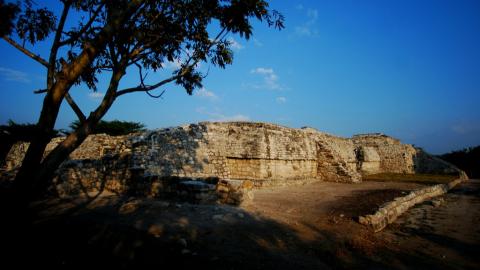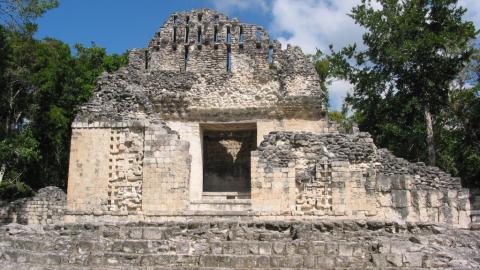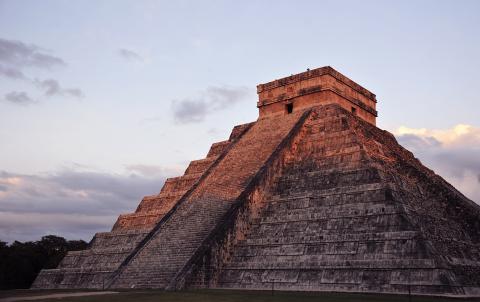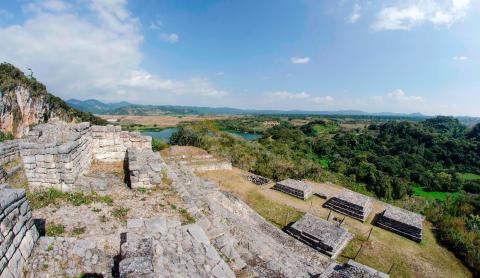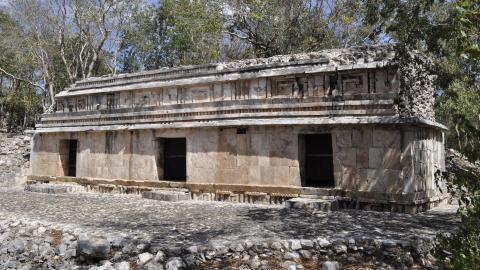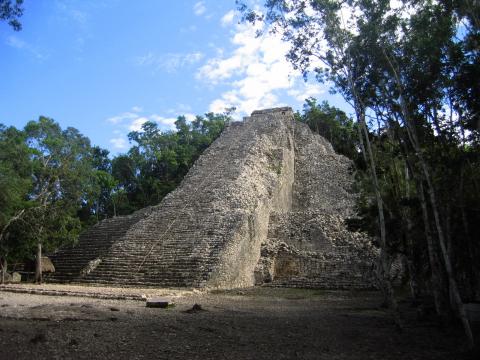
View PDFMostrando 25 - 36 de 134
Región cultural Maya
Chiapa de Corzo
In the remote past this was an agricultural village on the banks of the river Grijalva and it became the most important ceremonial center of the Mixe-Zoque people. Its terraces, plazas and constructions, as well as the multitude of tombs with offerings and the ornamentation of the temples…
Chiapa de Corzo
In the remote past this was an agricultural village on the banks of the river Grijalva and it became the most important ceremonial center of the Mixe-Zoque people. Its terraces, plazas and constructions, as well as the multitude of tombs with offerings and the ornamentation of the temples…
Chicanná
The masks of Itzamná, the god of the sun and wisdom represented by a face with enormous open jaws and bejewelled ears, appear especially grandiose, in this small ancient city where the ruling class once lived, situated on the route between the Gulf of Mexico and the coast of Quintana Roo.
Chicanná
The masks of Itzamná, the god of the sun and wisdom represented by a face with enormous open jaws and bejewelled ears, appear especially grandiose, in this small ancient city where the ruling class once lived, situated on the route between the Gulf of Mexico and the coast of Quintana Roo.
Chichén Itzá
At the time of the equinoxes, the shadow of Kukulkan, the serpent, descends from its temple to fertilize the earth, while the red jaguar is hidden in the Temple of the Warriors, with its jade spots glowing. This ancient capital city has been declared a World Heritage Site.
Chichén Itzá
At the time of the equinoxes, the shadow of Kukulkan, the serpent, descends from its temple to fertilize the earth, while the red jaguar is hidden in the Temple of the Warriors, with its jade spots glowing. This ancient capital city has been declared a World Heritage Site.
Chinkultic
The great city of the lakes of the ancient Maya, near the Guatemala border, with buildings cleverly adapted to the irregular shape of the hills. It has a very large ballcourt and the Plataforma de las Lajas (Platform of the Stone Slabs) was built from the largest cut stones in the whole of…
Chinkultic
The great city of the lakes of the ancient Maya, near the Guatemala border, with buildings cleverly adapted to the irregular shape of the hills. It has a very large ballcourt and the Plataforma de las Lajas (Platform of the Stone Slabs) was built from the largest cut stones in the whole of…
Chunhuhub
Stone carvings like gold filigree adorn the residences of those "who speak to the gods." The elaborate Puuc architectural style makes this ancient city a relic that remains almost entirely intact even after 12 centuries. Its greatest treasure is El Palacio.
Chunhuhub
Stone carvings like gold filigree adorn the residences of those "who speak to the gods." The elaborate Puuc architectural style makes this ancient city a relic that remains almost entirely intact even after 12 centuries. Its greatest treasure is El Palacio.
Cobá
Important ancient Maya city in an area of lakes, from here the great sacbe’ob (long roads) were built, which helped it survive over many others until it was defeated by Chichen Itza. The round observatory, the great Pyramid of Nohoch Mul and the stunning inscriptions make it unique.
Cobá
Important ancient Maya city in an area of lakes, from here the great sacbe’ob (long roads) were built, which helped it survive over many others until it was defeated by Chichen Itza. The round observatory, the great Pyramid of Nohoch Mul and the stunning inscriptions make it unique.

